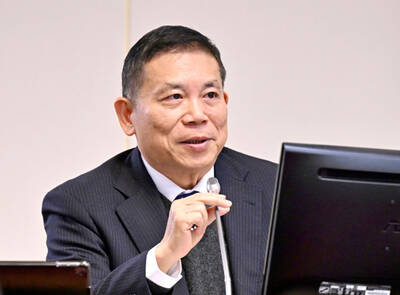Despite having prototypes ready, the world’s second-largest PC maker Acer Inc (宏碁) yesterday said it would not rush onto the e-reader bandwagon for now, as it was still studying the feasibility of a successful business model and a total product solution.
The size of the e-reader market is not that big and the industry has yet to come up with a proven business model, Acer chairman Wang Jeng-tang (王振堂) told reporters yesterday.
Acer is watching whether the public would embrace e-readers and from a profitability standpoint, the company is not ready to launch e-readers, despite having the hardware ready, Wang said.
Last month, electronics maker BenQ Corp (明基) and publisher Yuan-Liou Publishing Co (遠流出版) debuted e-readers in Taipei.
Meanwhile, Acer is expecting a decrease in notebook shipments this quarter of 5 percent, from the earlier projected 10 percent decrease.
New laptop products in the pipeline include a less than 2cm-thick consumer ultra-low voltage (CULV) model, and another running on Intel Corp’s next generation of Core microprocessors.
Wang said the inferior computing power of CULV models has been holding them back, but that the new Core processors would resolve the issue by offering better computation as well as a long-lasting battery life.
The company projects that the commercial PC segment will see an upturn starting in the second half of the year, especially in emerging markets such as Brazil, Russia, India, China and Indonesia.

Taiwan will prioritize the development of silicon photonics by taking advantage of its strength in the semiconductor industry to build another shield to protect the local economy, National Development Council (NDC) Minister Paul Liu (劉鏡清) said yesterday. Speaking at a meeting of the legislature’s Economics Committee, Liu said Taiwan already has the artificial intelligence (AI) industry as a shield, after the semiconductor industry, to safeguard the country, and is looking at new unique fields to build more economic shields. While Taiwan will further strengthen its existing shields, over the longer term, the country is determined to focus on such potential segments as

UNCERTAINTY: Innolux activated a stringent supply chain management mechanism, as it did during the COVID-19 pandemic, to ensure optimal inventory levels for customers Flat-panel display makers AUO Corp (友達) and Innolux Corp (群創) yesterday said that about 12 to 20 percent of their display business is at risk of potential US tariffs and that they would relocate production or shipment destinations to mitigate the levies’ effects. US tariffs would have a direct impact of US$200 million on AUO’s revenue, company chairman Paul Peng (彭雙浪) told reporters on the sidelines of the Touch Taiwan trade show in Taipei yesterday. That would make up about 12 percent of the company’s overall revenue. To cope with the tariff uncertainty, AUO plans to allocate its production to manufacturing facilities in

Chizuko Kimura has become the first female sushi chef in the world to win a Michelin star, fulfilling a promise she made to her dying husband to continue his legacy. The 54-year-old Japanese chef regained the Michelin star her late husband, Shunei Kimura, won three years ago for their Sushi Shunei restaurant in Paris. For Shunei Kimura, the star was a dream come true. However, the joy was short-lived. He died from cancer just three months later in June 2022. He was 65. The following year, the restaurant in the heart of Montmartre lost its star rating. Chizuko Kimura insisted that the new star is still down

While China’s leaders use their economic and political might to fight US President Donald Trump’s trade war “to the end,” its army of social media soldiers are embarking on a more humorous campaign online. Trump’s tariff blitz has seen Washington and Beijing impose eye-watering duties on imports from the other, fanning a standoff between the economic superpowers that has sparked global recession fears and sent markets into a tailspin. Trump says his policy is a response to years of being “ripped off” by other countries and aims to bring manufacturing to the US, forcing companies to employ US workers. However, China’s online warriors